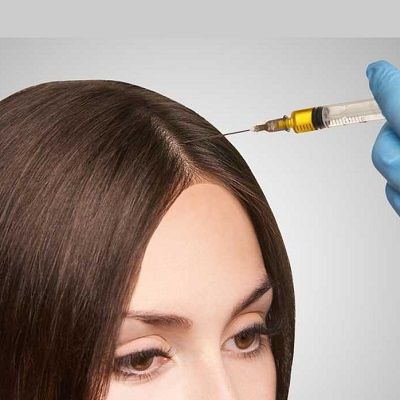Introduction
Hair loss is a common concern that affects millions of people worldwide, prompting a growing demand for effective and innovative treatments. Among the various options available, Platelet-Rich Plasma (PRP) therapy has gained considerable attention for its potential to stimulate hair growth and combat hair thinning. As the field of PRP hair treatment continues to evolve, advanced techniques are emerging, offering new hope and improved results for individuals seeking to restore their hair. This article delves into the latest advancements in PRP Hair Treatment Clinic in Oman, exploring how these techniques are transforming the landscape of hair restoration.
Understanding PRP Hair Treatment
What is PRP Therapy?
PRP therapy involves extracting a small amount of the patient's blood, processing it to concentrate the platelets, and then injecting the resulting Platelet-Rich Plasma into the scalp. Platelets contain growth factors that are believed to enhance the body's natural healing processes, potentially rejuvenating hair follicles and promoting hair regrowth. This minimally invasive procedure has been celebrated for its effectiveness and safety, making it a popular choice in hair restoration.
The Evolution of PRP Techniques
While traditional PRP therapy has proven effective, advancements in technology and technique have paved the way for more refined and potent treatments. These developments aim to enhance the efficiency of PRP therapy and achieve better results for patients.
Advanced Techniques in PRP Hair Treatment
1. Enhanced PRP Preparation Methods
A. Dual Spin Protocol
The Dual Spin Protocol involves a two-step centrifugation process to separate and concentrate the platelets more effectively. This method increases the concentration of growth factors in the PRP, potentially enhancing its therapeutic benefits. By refining the preparation process, clinics can offer patients a more potent solution for hair regrowth.
B. Advanced Separation Technologies
Recent advancements in centrifugation technology and separation techniques have improved the purity and concentration of PRP. Newer devices are designed to maximize the yield of platelets while minimizing contamination, leading to more consistent and reliable results.
2. Combination Therapies
A. PRP and Microneedling
Microneedling, a procedure that involves creating micro-injuries in the scalp to stimulate healing and collagen production, is increasingly being combined with PRP therapy. This combination enhances the absorption and effectiveness of PRP, promoting better hair regrowth. The microneedling process creates channels that allow PRP to penetrate deeper into the scalp, potentially improving the results of the treatment.
B. PRP and Stem Cell Therapy
Stem cell therapy is another advanced technique that is being integrated with PRP. Stem cells have the potential to regenerate and repair damaged tissues, and when combined with PRP, they may offer a synergistic effect that boosts hair follicle health and promotes hair growth. Clinics are exploring various ways to integrate these technologies for optimal outcomes.
3. Customized PRP Formulations
A. Tailored Growth Factor Profiles
Advancements in understanding the role of specific growth factors in hair regrowth have led to the development of customized PRP formulations. Clinics are now able to tailor PRP treatments based on individual patient profiles, targeting specific factors that may be most effective for their unique hair loss conditions.
B. Platelet Activation Techniques
Innovative techniques for activating platelets before injection are being researched and implemented. These techniques aim to enhance the release of growth factors from platelets, potentially increasing the therapeutic efficacy of PRP treatments. Activation methods can include the use of specialized activators or modifying the processing protocols.
4. Improved Delivery Systems
A. Precision Injection Technology
New technologies in injection systems are allowing for more precise delivery of PRP into the scalp. Devices with advanced needle guidance and controlled injection mechanisms help ensure that PRP is administered at optimal depths and locations, improving the overall effectiveness of the treatment.
B. High-Resolution Imaging
The use of high-resolution imaging techniques, such as ultrasound, during PRP injections helps practitioners visualize the treatment area with greater accuracy. This advancement enables more targeted and effective application of PRP, enhancing the potential for successful outcomes.
Conclusion
The field of PRP hair treatment is experiencing rapid advancements that are reshaping the possibilities for individuals seeking to address hair loss. From enhanced preparation methods and combination therapies to customized formulations and improved delivery systems, these advanced techniques are paving the way for more effective and personalized treatments. As technology continues to evolve, patients can look forward to increasingly sophisticated options that offer greater hope and more promising results in their journey toward hair restoration. For those considering PRP therapy, staying informed about these innovations and consulting with experienced practitioners can help ensure the best possible outcomes in the pursuit of healthy, vibrant hair.
